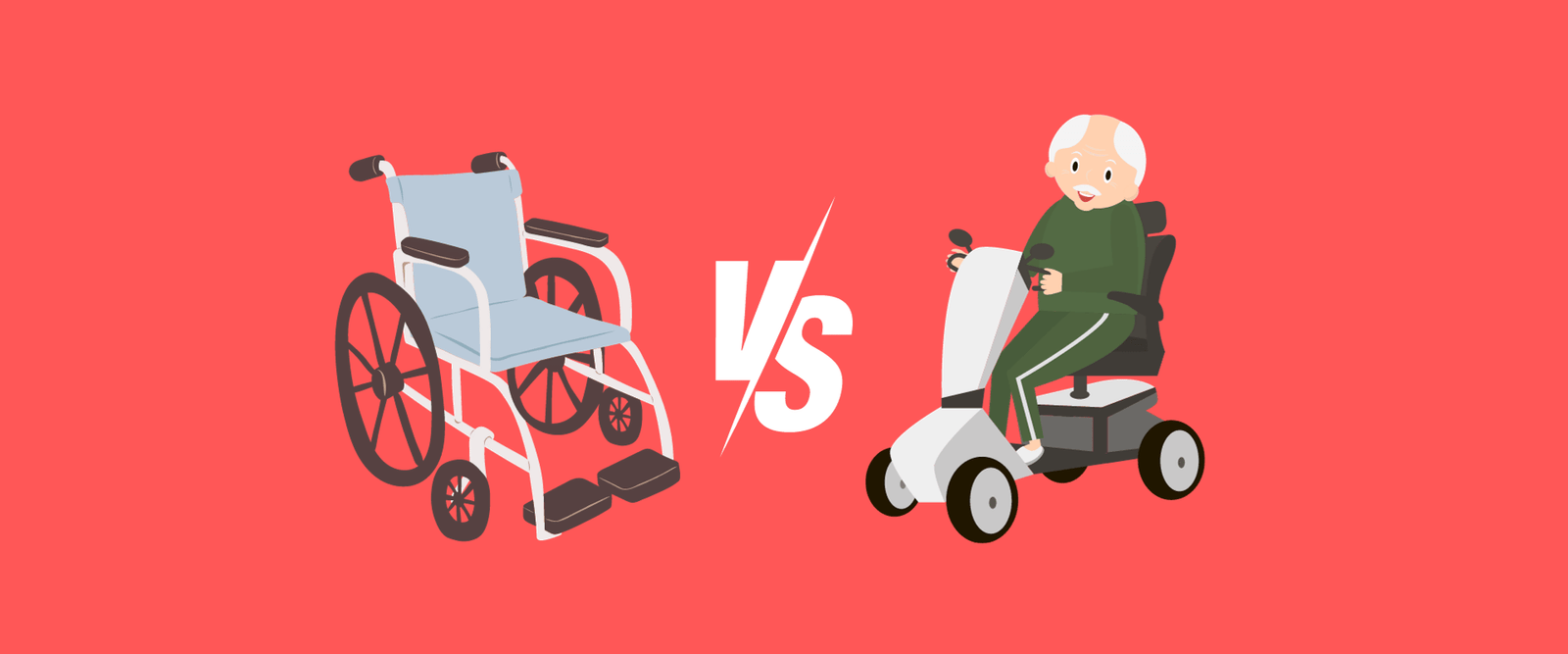Quick Answers
Wheelchairs: Manual and electric models available. Suitable for indoor and outdoor use. User control through physical effort or joystick.
Mobility Scooters: Scooter-like design with handlebars. Primarily designed for outdoor use. Controlled using hands and upper body strength.
Considerations for Choosing: User needs, physical abilities, and lifestyle. Wheelchairs more manoeuvrable indoors, scooters excel outdoors. Cost varies, an essential consideration for users and caregivers.
Wheelchairs and mobility scooters are mobility aids designed to provide individuals with limited mobility the freedom to move about. While they share a common goal, they differ in design, operation, and suitability for various users and situations. In this comparison, we’ll explore the characteristics of wheelchairs and mobility scooters to help you make an informed choice.
Wheelchairs
Design and Seating
Wheelchairs have a chair-like design with large rear wheels that the user manually propels by pushing the hand rims. Electric versions, known as electric wheelchairs, are also available, powered by batteries and controlled via a joystick.
Maneuverability
Manual wheelchairs require upper body strength and physical effort for operation. Electric wheelchairs provide easier manoeuvrability and independence, making them ideal for users with limited upper body strength.
Indoor and Outdoor Use
Wheelchairs are versatile and suitable for both indoor and outdoor use. Manual wheelchairs can navigate tight indoor spaces, while electric wheelchairs are often designed for outdoor terrain.
User Control
Manual wheelchairs rely on the user’s physical effort for propulsion, while electric wheelchairs are controlled using a joystick or other input methods.
Customisation
Wheelchairs, especially electric models, can be customised with various seating options and features to suit users’ needs.
Mobility Scooters
Design and Seating
Mobility scooters have a scooter-like design with a seat and handlebars, similar to motorised scooters. Electric batteries typically power them and do not require manual effort for propulsion.
Operational Effort
Compared to manual wheelchairs, mobility scooters are more accessible, making them suitable for individuals with limited upper body strength or skill.
Outdoor Use
Mobility scooters are primarily designed for outdoor use and are equipped with larger, more rugged wheels. They can handle various terrains, including sidewalks, parks, and streets.
User Control
Mobility scooters are controlled using handlebars, similar to those on a bicycle or scooter, and require using hands and upper body strength for steering.
Portability
Mobility scooters are bulkier and less portable than manual wheelchairs, which can be disassembled for transport.
Considerations
User Needs
Choosing between a wheelchair and a mobility scooter hinges on the user’s needs, physical abilities, and lifestyle. Mobility scooters are often preferred for outdoor activities, while wheelchairs offer versatility for both indoor and outdoor use.
Maneuverability
Wheelchairs are generally more manoeuvrable in tight indoor spaces, while mobility scooters excel in outdoor environments.
Cost
Both mobility scooters and wheelchairs come in various price points, making cost an essential consideration for users and their caregivers.
Summary Of Wheelchairs Vs Mobility Scooters
In conclusion, the decision between a wheelchair and a mobility scooter should be based on the user’s mobility requirements, lifestyle, and the specific environment in which the device will be used. Each option has its unique advantages, so it’s essential to choose the one that aligns with the individual’s needs and preferences.











